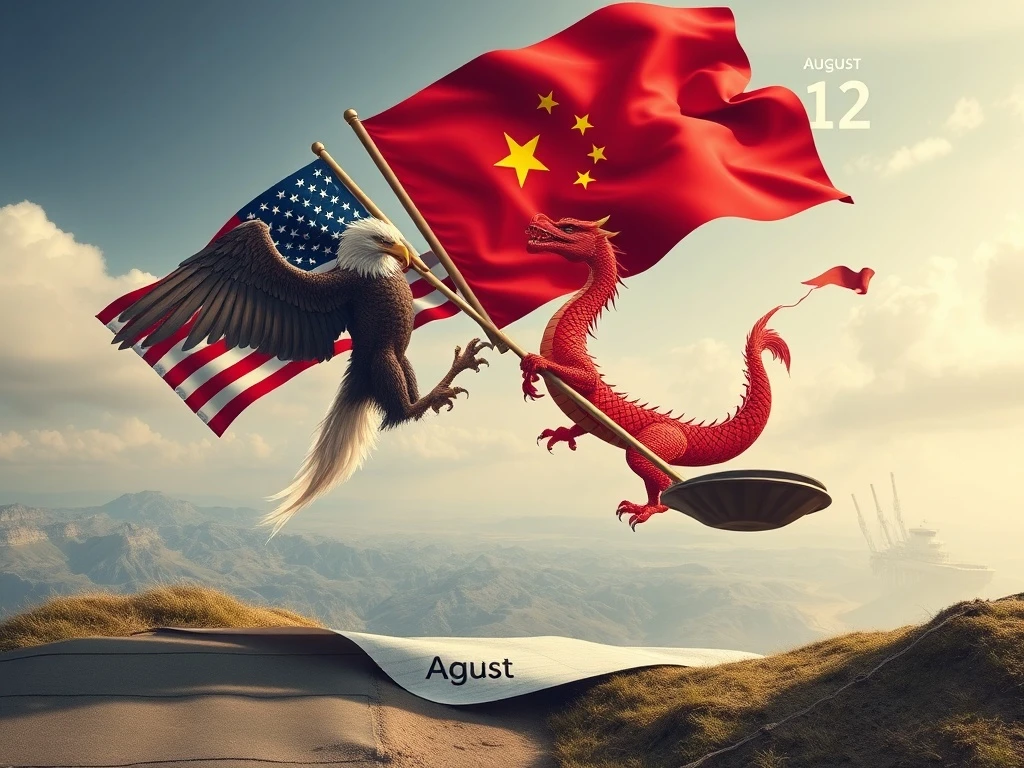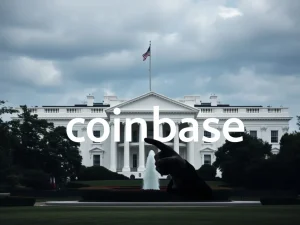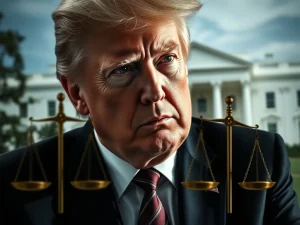US-China Tariffs: A Critical Extension Halts Escalation Until August 12

The ongoing saga of US-China Tariffs has taken another interesting turn. In a move that’s set to ripple across global markets, the two economic giants have agreed to a crucial 90-day Tariff Extension, preserving the current 10% rate instead of escalating to a much higher 34% until August 12. This decision, emerging from intense Trade Negotiations in Stockholm, offers a temporary breather in what many have dubbed the protracted Trade War. For anyone tracking global economics, understanding this pause is key to anticipating future market shifts.
What Does This Tariff Extension Really Mean for Global Trade?
The recent agreement between the U.S. and China to extend their reciprocal tariffs by 90 days is more than just a procedural delay; it’s a strategic maneuver. During trade negotiations in Stockholm, Sweden, both nations opted to prolong the suspension of heavy tariffs that were initially imposed in May. This means that U.S. imports from China will continue to be subject to a 10% base rate. Crucially, this prevents the reciprocal rate from jumping to 34% until August 12.
- Current Rate Maintained: 10% base rate on U.S. imports from China.
- Escalation Averted: The 34% reciprocal rate is delayed.
- Duration: A 90-day extension, effective until August 12.
- Context: Aligns with the Trump administration’s strategy of using tariffs as leverage in bilateral discussions.
This decision reflects a pattern of temporary pauses in tariff escalations since May, when major duties were suspended to allow for dialogue. Analysts view this not as a turning point, but as a cautious pause, allowing both sides to manage existing trade pressures without immediate escalation.
Why Are These Trade Negotiations So Complex?
The discussions between the U.S. and China are multifaceted, addressing a range of contentious issues. While the Tariff Extension provides a temporary reprieve, the underlying problems remain. The U.S. aims to tackle significant concerns, including China’s industrial overcapacity, which Washington believes distorts global markets, and Beijing’s role in the fentanyl crisis, a major public health issue in the U.S.
Conversely, Beijing is expected to challenge the fairness of the 20% additional tariffs imposed in March. Chinese sources suggest a willingness to accept a reduced 10% rate if the extra 20% is lifted, though no formal agreement has been reached. An editorial from the People’s Daily underscored China’s “constructive stance” towards resolving tensions through dialogue, indicating a diplomatic effort to manage expectations and find common ground.
Experts like Niklas Swanstrom of the Stockholm Institute for Security and Development Policy describe the talks as a cautious pause. Frederic Cho of the Sweden-China Business Council echoed this, seeing the 90-day extension as a probable outcome. Philippe Le Corre of ESSEC Business School suggested these discussions could lay groundwork for a final agreement, potentially at the APEC summit in October. However, a significant sticking point remains the U.S.’s lack of clear criteria for “sufficient progress” on the fentanyl issue.
Navigating the Global Trade War: Broader Economic Stakes
The ongoing Trade War extends beyond just the current US-China Tariffs. The broader economic stakes are substantial. The Peterson Institute for International Economics highlights that the U.S. average tariff on Chinese goods stands at 51.1%. Beijing views this level as excessive, despite having absorbed Trump-era duties. China has implemented its own retaliatory measures, including 25% tariffs on U.S. agricultural products and export restrictions on rare earth materials, further complicating global trade balances.
Speculative projections, such as a 50% U.S. tariff on Chinese imports, have circulated, notably in a Yahoo article. However, it’s crucial to note that the USTR’s tracker shows no such rate, underscoring the importance of distinguishing between forecasts and confirmed policies. These unconfirmed projections can create market volatility and uncertainty, making accurate information critical for businesses and investors.
The Role of Economic Leverage in Bilateral Relations
The Trump administration’s “America First” agenda has extended reciprocal tariffs beyond China, impacting trade relations with other nations as well. For instance, Japan’s rate was reduced to 15%, while Indonesia’s dropped to 19%. This demonstrates a delicate balancing act between applying pressure and maintaining strategic partnerships. The U.S. has also specifically targeted sectors, such as maritime cargo handling equipment, with tariffs ranging from 20% to 100%, emphasizing a focus on strategic industries.
As the August 12 deadline approaches, the Stockholm talks represent a critical juncture. While a 90-day pause provides time for deeper Trade Negotiations, the absence of concrete progress risks renewed escalations. Both sides are using economic leverage to test each other’s resolve amid enduring geopolitical tensions. This strategic stalemate highlights the complex interplay of economic policy and international relations, where tariffs serve as powerful tools in a high-stakes game.
Conclusion: A Strategic Pause, Not a Resolution
The recent Tariff Extension between the U.S. and China is a temporary reprieve, not a definitive end to their trade disputes. It reflects a strategic pause, allowing both nations to continue high-stakes Trade Negotiations without immediate escalation of the US-China Tariffs. While the 10% rate remains in place until August 12, the underlying issues—from industrial overcapacity to fentanyl—persist. The use of Economic Leverage through tariffs continues to shape global trade, making the next few months crucial for understanding the future trajectory of this complex relationship. Businesses and markets will be closely watching for any signs of breakthrough or renewed tensions as the deadline looms.
Frequently Asked Questions (FAQs)
Q1: What is the new tariff rate for US imports from China?
A1: The U.S. will maintain a 10% base tariff rate on imports from China until August 12, preventing an escalation to 34%.
Q2: How long will the tariff extension last?
A2: The tariff extension is for 90 days, with the current rates in effect until August 12, 2025.
Q3: What are the main issues discussed in the US-China trade negotiations?
A3: Key issues include China’s industrial overcapacity, its role in the fentanyl crisis, and China’s challenge to additional 20% tariffs imposed by the U.S.
Q4: Why is the US using tariffs as economic leverage?
A4: The U.S. uses tariffs as a tool to pressure China into addressing specific economic and geopolitical concerns, aiming to gain concessions in bilateral negotiations.
Q5: Are tariffs only affecting US-China trade?
A5: While the focus is on US-China trade, the Trump administration’s “America First” agenda has extended reciprocal tariffs to other nations like Japan and Indonesia, and targeted specific industries globally.








